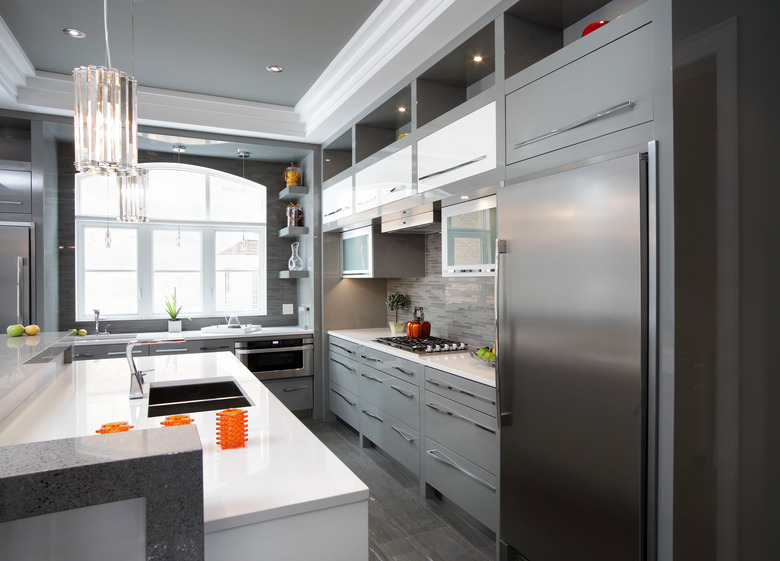The Best Way To Remove Rust From Metal Cabinets
Rusty metal cabinets make your space look dated and run-down. Ignoring the rust can make the damage worse. The best way to remove rust from metal cabinets is to catch it early and start with the gentlest option to avoid damaging the surrounding area. Whether you're dealing with retro metal kitchen cabinets or an old filing cabinet, using gentle abrasives and household items can get rid of the rust.
Wear Protective Gear
Wear Protective Gear
Before you work around metal, especially when you're scrapping off rust, protect yourself from any stray shards or dust. Wear eye protection to prevent metal pieces or dust from getting into your eyes. Also, wear a mask so you don't breath in the debris.
Clean the Metal Cabinets
Clean the Metal Cabinets
Cleaning powder coated metal kitchen cabinets before you tackle the rust removes any built-up gunk. You can see the rusty areas better to make removal easier.
Scrub the metal cabinets with warm, soapy water, being careful not to let water run down the cabinets. Too much water, especially in seams, hinges and similar areas, can cause additional rusting. If the cabinets are covered in grease or grime that doesn't wash away easily, use rubbing alcohol to remove it.
Wipe away any soap or rubbing alcohol using clean water. Dry off the cabinets to eliminate rust-causing moisture.
Brush Away Loose Rust
Brush Away Loose Rust
Once you can see the rusty areas clearly, try brushing away any larger chunks or loose rust. You can use a razor blade to help gently scrape off the rust. Hold the blade carefully at an angle using even pressure. Avoid digging into the rust with a corner of the blade as you may gouge the metal.
Use Household Items
Use Household Items
Lemon juice and salt can help gently remove the rust. If the rust is on the cabinet door, remove it from the cabinet to make this option easier. Sprinkle salt on the rust and squeeze fresh lemon juice onto the salt. Give the mixture a few hours to work, then scrub it and wipe away the remaining juice and salt.
An alternative is to make a baking soda paste with water. Rub on the paste to cover the rust and wait a few hours. Scrub the baking soda paste with a soft-bristle brush. Wash the paste off of the cabinet and dry it.
Sand or Scour Away Rust
Sand or Scour Away Rust
If the natural solutions don't remove all of the rust, grab steel wool or sandpaper to help scour away the patches. Use the finest steel wool or sandpaper that works on the job. For larger patches of rust, you may need a coarser option. For small patches, start with extra-fine steel wool.
Focus the sandpaper or steel wool only on the rusty areas, keeping it away from the metal that isn't rusted. Rub gently so you only remove the rust without scratching the metal.
Clean Up the Cabinets
Clean Up the Cabinets
After you remove all of the rust, wipe down the metal cabinets again. This helps remove any dust and debris from the rust-removable process.
Dry the cabinets thoroughly, especially the sanded areas. If you leave any moisture, it can develop more rust. Use a hair dryer to quickly remove the moisture from the metal.
Repaint Cheap Metal Kitchen Cabinets
Repaint Cheap Metal Kitchen Cabinets
After sanding, you may need to repaint your cabinets to give them a finished look. Repaint with a product designed for metal. If you can find an exact match, you may be able to touch up small areas without repainting the entire cabinet. You can also use a primer designed to inhibit rust to help prevent future rusting.
If the cabinet doesn't need to be repainted, you can apply car wax to the surfaces after you clean and dry it. The wax makes the cabinet finish shine again to give it a refreshed look.
